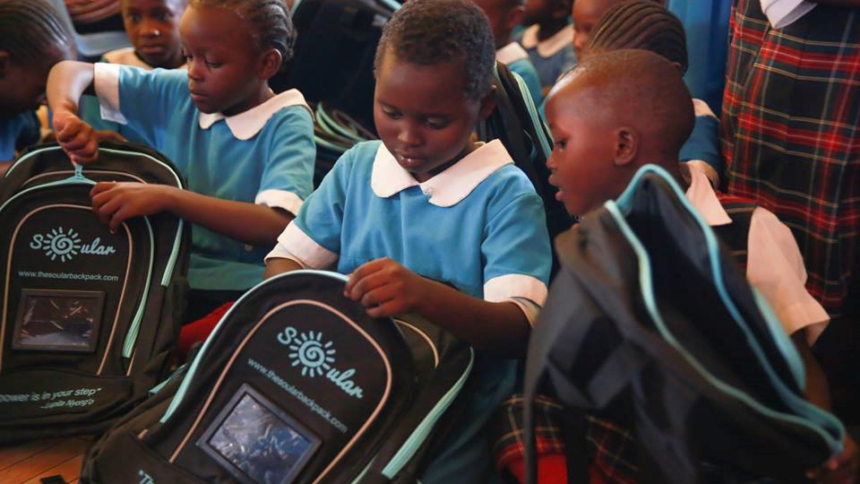By Brian Moseti Snr. on September 13, 2016 for Science Made in Africa.
Salima Visram, 23, who grew up in Kenya before relocating to Canada, has come up with an ingenious way of ensuring that school going children in the marginalized areas of Africa have electricity to power their reading lamps at home.
Visram designed and put together The Soular Backpack, which solar panel on it and whose storage battery is later connected to an LED lamp, allowing the children, who have no access to electricity study through the night.
“From a very young age, I was taught to understand the complexities of poverty, and to do whatever I could to contribute to its alleviation. I have witnessed the impact that poverty, and the lack of electricity can have on children’s lives, and development,” said Visram.

The back packs consist of a solar panel, a battery pack and an LED lamp. The solar panel stores solar power during the day and allows the LED lamp to be connected to it during the night as a light source. For four hours of charging, the back pack is able to give out seven to eight hours of light at night.
The invention targets the issue of education, the lack of electricity, and the health complications that arise due to kerosene use.
4,000 deaths occur daily as a result of kerosene induced illnesses, according to the World Bank.
The result of a disrupted education is the perpetuation of the vicious cycle of poverty, where children turn to child prostitution and human trafficking as a way to make a living.
In January 2015, Visram raised $38,000 through crowd-funding platform Indiegogo, which she used to place the first order of 2,000 backpacks to distribute to the Kikambala village, in coastal Kenya, as a pilot project.

90% of the households in the Kikambala Village do not have access to electricity. The distribution was implemented through the Kikambala Primary School, a government school in the village.
“I eventually want to implement this and expand this to a hundred schools in the county within the next year and a half,” said Ms. Visram.
In the long-run, Visram plans to form partnerships with UNICEF, the UNHCR and the Government of Kenya to expand this campaign and project to other parts of Kenya and Africa.
Mis Visram attended the Aga Khan Academy in Mombasa between the year 2003 and 2009 before leaving to join the United World College of The Atlantic for an International Baccalaureate Diploma.
She later joined the McGill University in Canada for a Bachelor of Arts (B.A.), majoring in International Development Studies, Concentration in Economic Development and Living Standards.
But she did not get into social enterprise by chance. “From the age of 4, my parents ensured that my siblings and I understood the complexities of poverty, and that as I grew as an individual and learnt more about the world, I also needed to ensure that the people around me, grew too,” she said.
Every year she would collect the money she got for her birthday and sponsor a child’s lunch for an entire year at the Kikambala Primary School, until a feeding program was introduced.
At just 12 years of age, she formed a social business entity, which employed local women from the Kikambala Village to make jewelry that I designed. This was sold at a local boutique, and the money raised went towards funding a girls’ choir.
She has also had helped implement community projects in Kenya with UNICEF and Microsoft.
